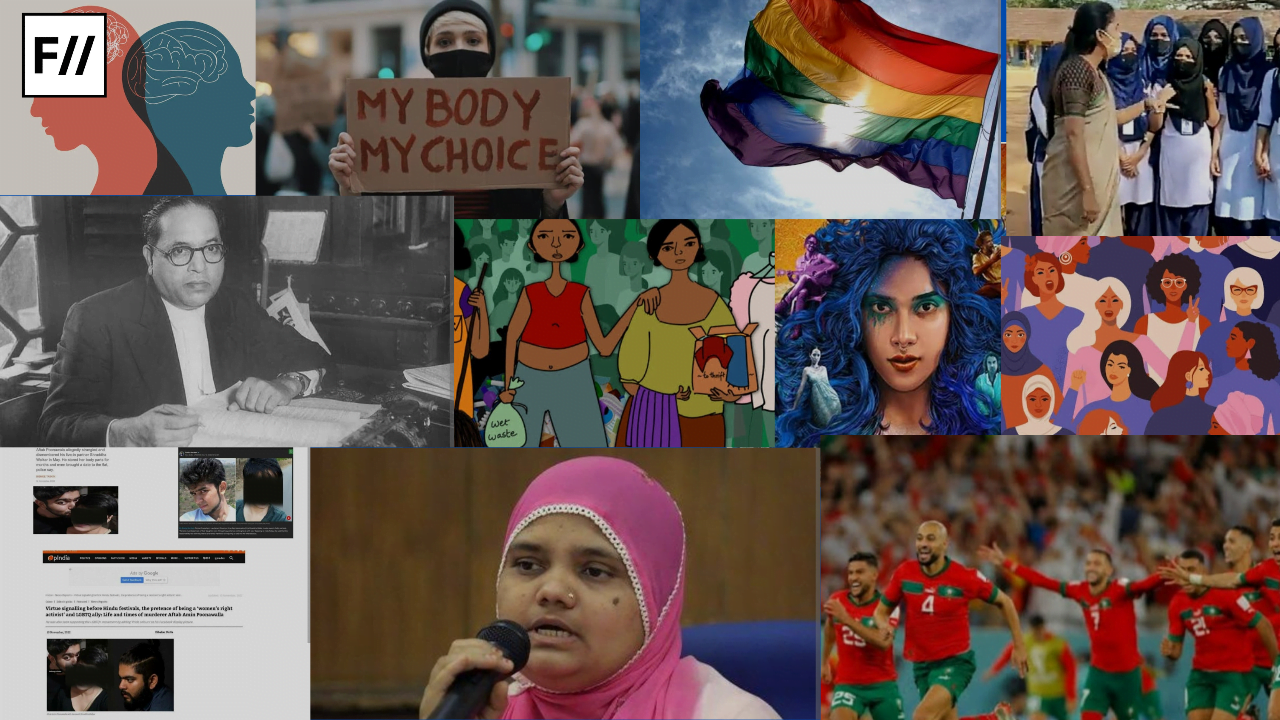2022 feels like a roller coaster ride- with hope, joy, panic and pain. The year that began with losses and griefs due to the pandemic, ended with the joy of FIFA World Cup 2022. We trained ourselves to be more kind to our mental and physical health, to find joy and pleasure in little things that came our way. At FII, we spent 2022 working from home, only meeting our team members through the screen. But our growing community of readers, writers and supporters helped us to sail through and we were able to curate some relevant, moving, important content despite the challenges.
You sustained us, and we hope we helped you hang on too, with our work. Here are 22 pieces on FII from 2022 that you loved reading.
1. ‘Bulli Bai’ And The Gendered Layers Of The Objectification Of Muslim Women

This article written by Abhigya Barthwal and Samridhi Shukla highlights the vicious hate crime and gender bias incidents that many empowered Muslim women faced, particularly for their upfront vocalisation of issues that Muslims face in the country.
Hundreds of Muslim women in India were auctioned in a mobile application called Buli Bai app including veteran Bollywood actor Shabana Azmi. The article attempts to highlight the microaggressions and Islamophobia that Muslim women face time and again in a hyper nationalistic country. Various factors from the fetishisation of the ‘other’- Muslims, the commodification of women and inherent misogyny is highlighted through this article.
2. Karnataka Hijab Row: Clothing, Secularism And A Nation In Danger
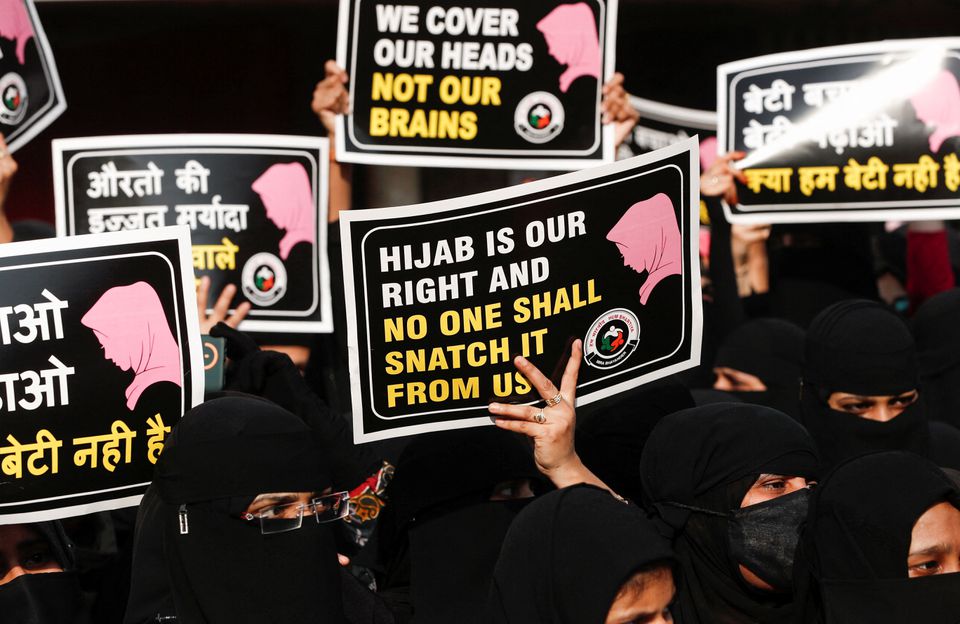
This article written by Aniba Junaid delivers a grave picture of the country’s justice and political scenario where Muslim women are fighting for their right to choose what they want to wear. Whether Muslim students should wear a hijab did not become a political debate the whole country had a say in, but not the Muslim women.
The article further highlights the deep-rooted reason behind Karnataka’s hijab ban which is the growing Islamophobia in the country. The quote from the article “How does the hijab become an act of faith and the raising of the saffron flag a weapon? It comes down to one single notion- fear’’ directly reflects the growing Islamophobia that is the reason behind the many political and justice recourse that the country is subjecting the Muslim minority to.
3. From Hijab Ban To Bulli Bai/Sulli Deals: The Muslim Women’s Assertion Against The Hindutva
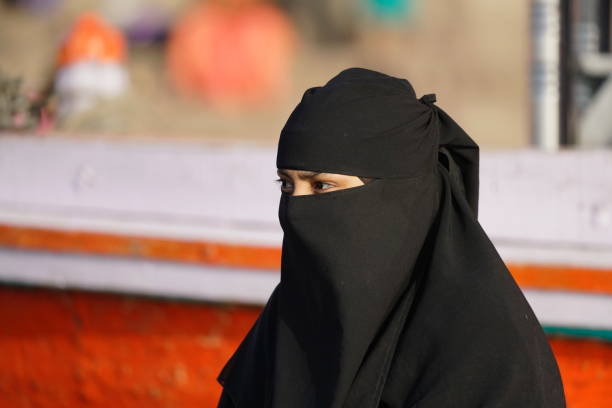
The article written by Danishmand Khan deals with the cases of Bulli Bai and Sulli Bai app cases in which Muslim women were auctioned online and the case of hijab ban in Karnataka where Muslim women students were denied the right to wear a hijab. Both incidents reflect how Muslim women faced the brunt and were the ones who were at the forefront to resist a draconian political order.
The writer speaks with several Muslim women who voice their opinions on the growing intolerance and vilification of Muslim women. As one of the Muslim voices in the article Eisha says ‘The comments range from ‘go to Pakistan’ to being called a ‘slut’ and this worries her considerably. She fears that all these events are a harbinger of an eventual genocide and that the days of the Muslims are ‘numbered’, clearly reflecting the essence of what the article is about.
4. How Does The Brahmanical-Patriarchal Social Order Affect Women’s Sexual Pleasure & Well-Being?
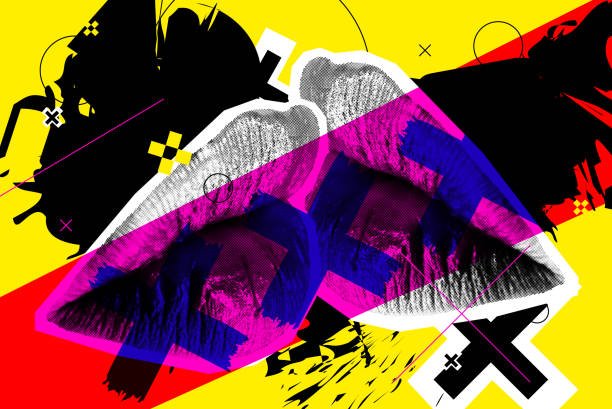
Written By Saakshi Saxena the article deals with discrimination of women regarding sexuality and sexual pleasure in a Brahminical patriarchal social order where women are mere objects who are to bear children and have to keep their sexuality and pleasure shunned as that would give them a tag of promiscuous women.
This article talks about the repression of sexual pleasures that women in a Brahminical patriarchal society go through resulting in their problematic sexual well-being. Highlighting the hetero-normative sexual order of our society where penetration is the only way of giving sexual pleasure leaves out the queer community at the margins.
5. Mental Health Is Political: Institutional Violence, Marginalisation And Mental Health Policies At Work
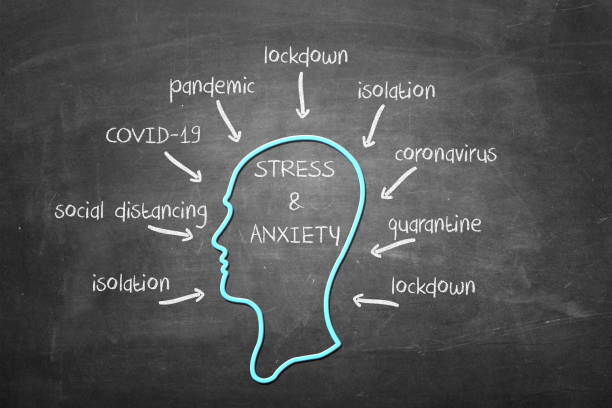
Written By Aiman Haque, the article talks about mental health being considered taboo in our society because we still do not take it seriously like we take our physical health. The topic of mental health remains untouched since the inherited conditioning that mental disorders mean someone is ‘mad’.
The article also highlights how minorities are worst hit by this hush-hush around the growing mental health concerns, as minorities are incessantly going through political and ideological violence in the nation.
6. Gender Bias In Sports: Women’s Sports Remain Sidelined By Lack Of Investment And Visibility

The article written by Shriya Roy highlights how women’s sports are still considered secondary when it comes to men’s sports owing to various discriminatory practices such as lack of proper visibility, the same kind of attention that men’s sports receive, lack of infrastructure and facilities as well as the proper policy work.
Shriya Roy writes “Organised sports and sporting events, and the entire sports ecosystem for that matter, are anchored on the projection of hypermasculine ideas. Hence, the idea that women in sports cannot exist solely on their talent, continues to sideline women athletes and players over the years”, further highlighting how women’s sports are subject to sexism and gender bias on a much larger scale than we think of.
7. Abortion Laws In India: Do Pregnant People Have Agency Over Their Bodies?

Stephy Stephen in this article speaks about the famous with Roe vs Wade case in America that brought the discussion of women’s right to choose and decide for their bodies again to the centre stage. Contextualising the case in India’s law over abortion, the article delves further into the fact that India does have a better abortion policy and law but is still burdened with taboos and stigmas around abortion and pregnancy owing to the patriarchal setup.
The writer says “The social stigma towards abortion is still very prevalent in India. There have been reports of abortion being denied in terms of moral grounds. The law is important to address this stigma, but it is not enough.”
8. What Is Mother’s Guilt?: Understanding The Nuances Of Guilty Mother Syndrome
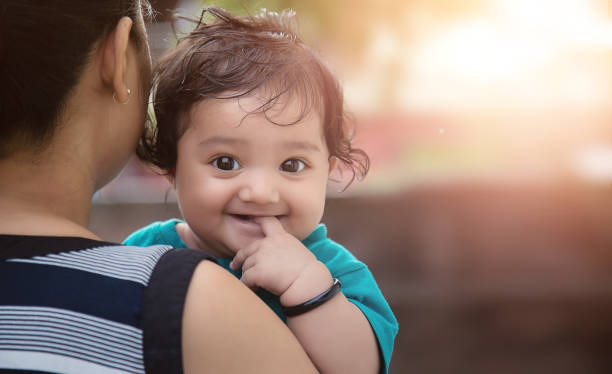
Sonal Choudhary in this article explores a quite sensitive theme of motherhood and the mother’s guilt that makes mothers the only responsible beings towards the upbringing of their child shunning their own lives as individuals and even after doing that carrying emotions ranging from not being good mothers, not being enough for the child.
The article is a rare insight into motherhood which is considered the most wholesome and fulfilling experience and duties of a woman but what comes after it and during it is also dealt with in the article.
Also read: 20 Stories On FII That You Loved The Most In 2020
9. What Is Gender Equity And How Is It Different From Gender Equality?
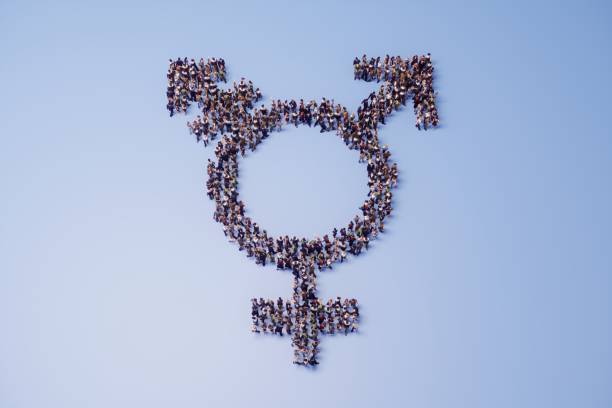
This article written by Udhriti Sarkar deals with the discourse around gender equality which is why societies and nations demand better inclusivity and representation from all sections of society which is not the case as what we need is gender equity.
The difference between gender equality and gender equity is enunciated clearly in the article. The article mentions; Although gender equality is the ultimate goal, it is only through gender equity that it can be achieved, clearly showing the actuality that gender equality is not what we need, gender equity is what our current sociopolitical systems need.
10. ‘It Is Not Pleasant To Wish To Look Different’: Navigating Body Shaming And Self-Acceptance While Being Feminist
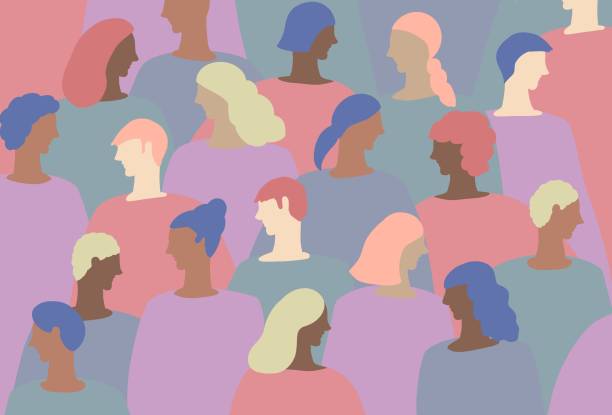
This article is written by Naureen Zaina and deals with the toxic positivity culture that we have become part and parcel of because of living in the age of quick information and social media whether, lives, love and particularly bodies have to be perfect and without flaws. Body positivity has become a weapon of the people who believe in the hustle culture where eating is shamed, unnatural and unrealistic beauty and body standards are encouraged.
The writer speaks from her personal experience dealing with navigating the changes in her body and then accepting her body as it is and sometimes still having doubts. “Most of us at some time or the other, have possibly looked in the mirror and made mental notes on what we wish we could change about ourselves. I know I have, and it was never a pleasant experience to criticise myself and wish to be different.”, this reflects what women are made to think about their bodies in this toxic positive culture.
11. Panchayat Web Series: A Brahmin Cast And Crew Romanticises A Meritless All-Brahmin Local Government
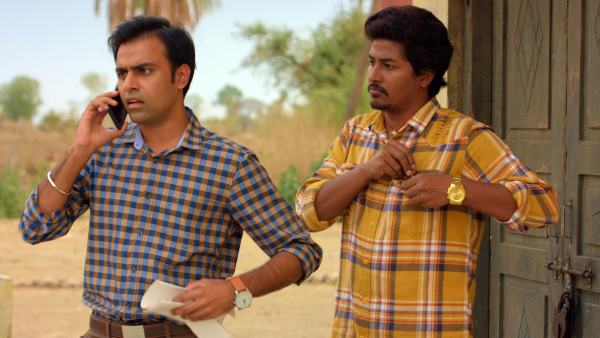
This extraordinary film review written by Ankita Apurva deals with the problematic and flawed narrative of Amazon’s famous web series Panchayat. The series shows casteism masquerading as humour for the privileged.
Urban upper-caste viewers identify with this show as a comedy because they share Abhishek Tripathi’s evasiveness and wilful unaccountability. They have spent their entire lives exploiting rural people without even acknowledging their presence. The review further gives in depth analysis of the themes and tropes in the film that all cater to a casteist and privileged characterisation of the narrative.
12. Environmental Crisis And Gender: The Effects Of Climate Change On Women’s Gynaecological Health
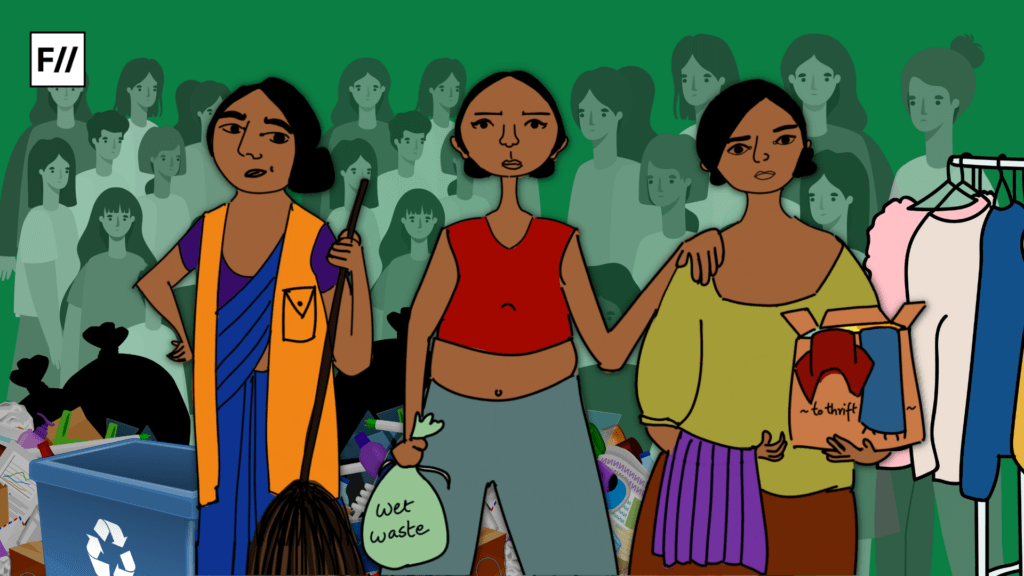
Written by Mrittika Mallick, the article looks into the rapid climate change seen in the past decade has had its adverse effects on our surroundings as well as on our body systems. However, one thing that often goes unnoticed is how disproportionately this has affected women and gender minorities more than men all over the world. This is owed to a heightened state of risks and vulnerabilities that women are exposed to, that compared to men, are far greater in degree as well as frequency.
Mrittika stresses on the fact that although the social, cultural, and economic vulnerabilities are further deepened due to a continuously degrading climate system, the most significant degradation that women face is that of their physical health.
Also read: 21 Stories On FII That You Loved The Most In 2021
The article also brings our attention to the fact that most women in rural areas have been found to undergo the ‘double burden’ of being laborious workers out of their household, as well as being housewives and dutiful girl children within the household. With climate changes resulting in droughts and drying up of water resources, these women have to travel great distances to collect the natural resources that their livelihoods depend on.
13. The Bilkis Bano Case: What Does It Mean For Women When Rapists Walk Free?
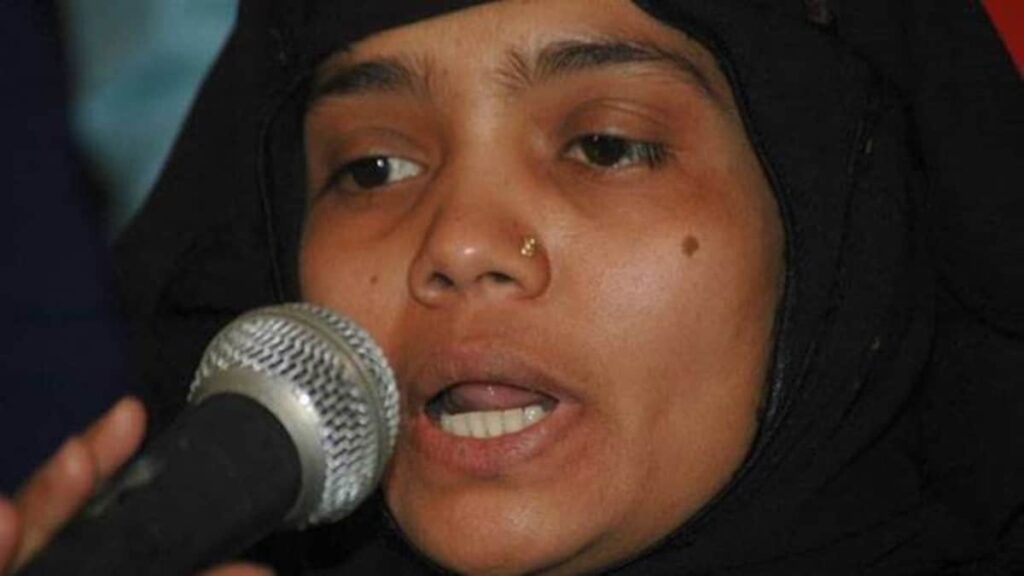
Written by Paran Amitava, the author tries to engage with the idea of remission in penal justice is old and has been celebrated by many in criminology, but in a State which is increasingly impinging on the social, political, and human rights of a religious minority, providing remission through a selective reading of musty laws to criminals acquitted for gangraping a woman from the aforementioned persecuted community has a much larger meaning—not just for the women of that community, but for the women of the body politic.
Paran delves into the recent Hijab-Ban that has compounded difficulties for Muslim women by forcing them to choose between their educational pursuits and their religious identity. You can be only one, either an educated woman or a Muslim woman. Her choice of clothing has been termed “regressive”, and all Hijab-donning women have been denied their agency. This again has been a tool to repress the community’s religious expression and theistic aspirations, while the highest offices of the country continue to claim that their intentions are in the best interests of Muslim women.
And lastly, the author tries to remind each of us regarding the Sulli Deals website. The author also adds that this event in isolation has been one which is a textbook example of how Muslim women will be viewed once all their rights have been snatched away—as objects of vulgar gratification for the good-mannered men of the Hindu Rashtra.
14. Colourism, Gender, And Caste: Skin Colour Shaming Is Intersectional And Cannot Be Addressed In Isolation
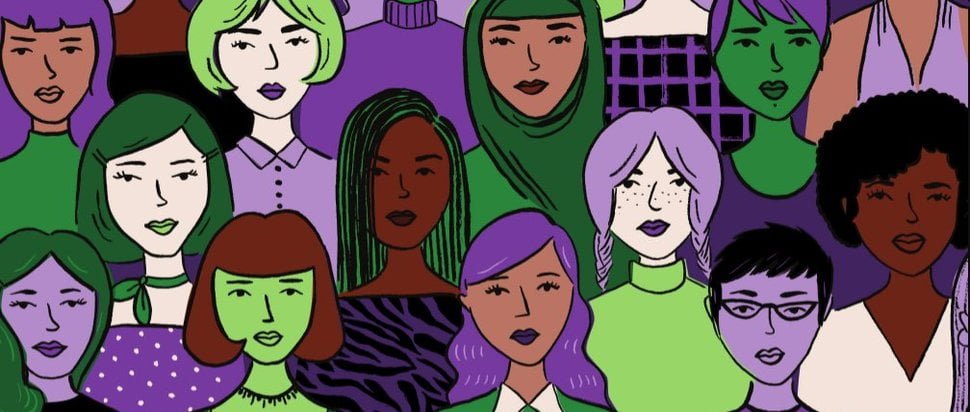
Written by Uthara Geetha, the author takes us to Colourism, like most forms of discrimination, which weighs heavily on women and their life choices. The subject of women’s bodies has been a focal point in feminist research due to the continued subjection and alteration they have been put through over centuries, and across cultures and geographies.
Uthara brings our attention to feminist scholarship that is caught between two different and opposing analyses of beauty, wherein one frames beauty as part of a structure of oppression and the other as a potentially pleasurable instrument of female agency. This is a dichotomy inherent in the conception of a ‘female’ body as it is both a principal means of expression and the site of the embodiment of social controls.
15. Gender Gap In Contraception: Are Choices Empowering Or Burdening For Women?
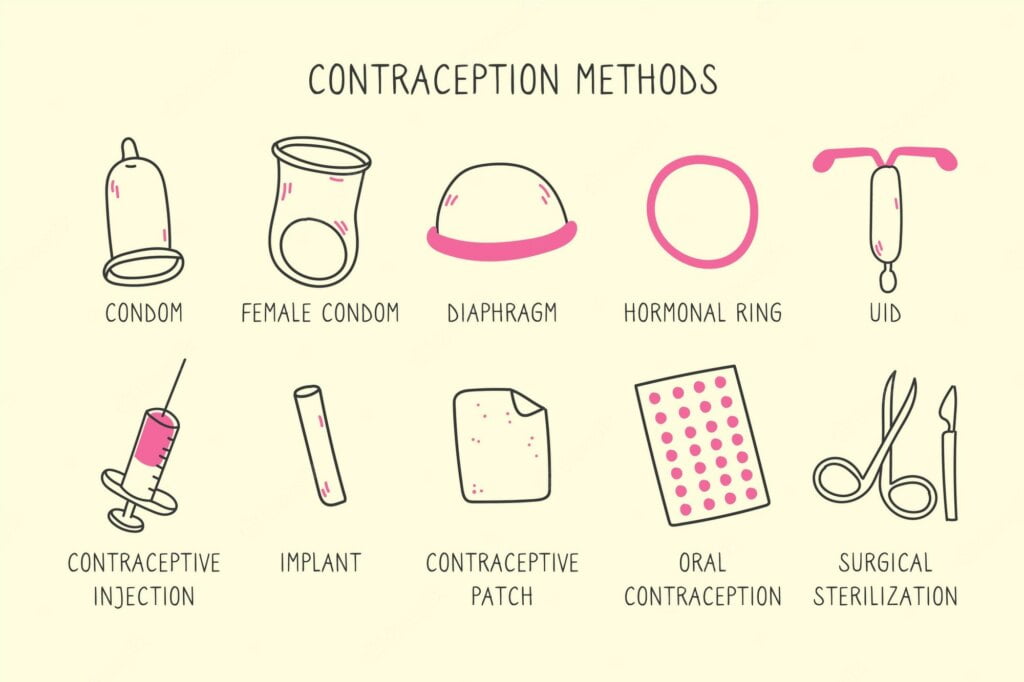
Written by Soumya Mathew, the author did a groundbreaking research and as a result the anecdotal evidence gathered from ASHAs and young mothers in Dakshinpuri suggests that female sterilisation and consumption of oral contraceptive pills such as Mala D continue to be popular forms of birth control measures, because, in many households, men refuse to use condoms or because of the popular myth in communities that vasectomy, the reversible procedure of male sterilisation, adversely affects the man’s fertility.
Soumya also makes us aware about how in a country where comprehensive sexuality education is yet to be an on-ground reality, young women having to discuss birth control and family planning measures with the elders in the family might seem difficult. This is where the engagement of male service providers to disseminate healthcare information to men becomes important. The National Health Ministry website’s description of the ASHA as someone who should be “primarily a woman …between the age of 25-45” indicates how childcare, maternal health, family planning, etc. eliminate men’s role and accountability.
16. Natchathiram Nagargiradhu: A Brilliant Cinematic Portrayal Of How Love Is Deeply Political
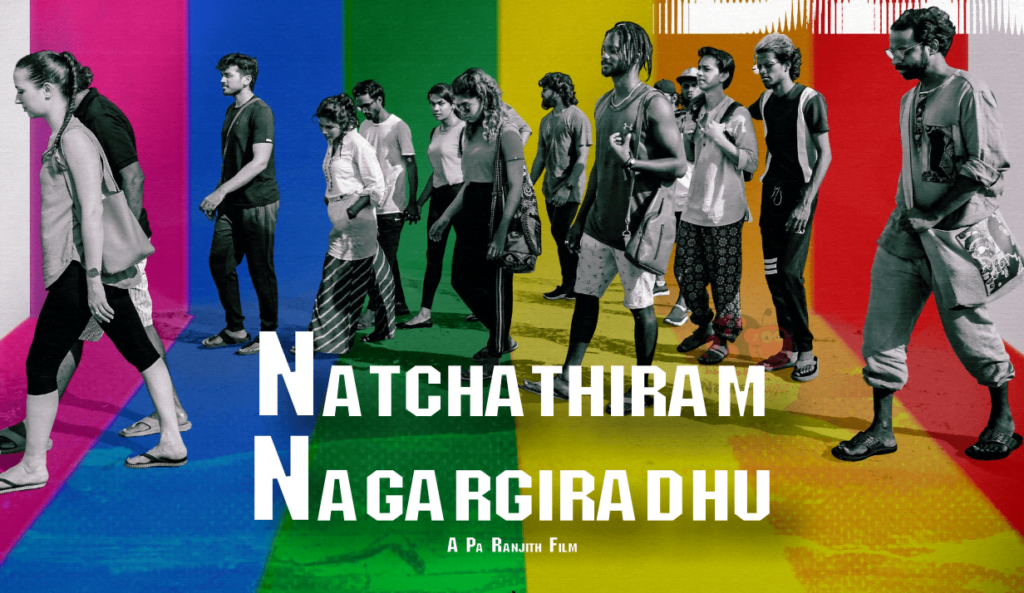
Written by Khushbu Sharma and Mahesh Choudhar, the article talks about Natchathiram Nagargiradhu, a movie based in Pondicherry and begins with the disturbed love relationship of a young woman Rene (Dushara Vijayan) and Iniyan (Kalidas Jayaram) but certainly does not end at it. Rene is an independent and strong-headed Dalit woman, always followed by the shadow of her caste identity wherever she goes.
The authors delve into Rene’s character and inform us that she is strong and yet, her vulnerability occasionally keeps peeking through her eyes. It is very interesting to observe that amongst all the messiness and complexity given to her character, a strong sense of political maturity never leaves her, which comes from the ‘epistemological privilege’ (as Prof. Gopal Guru calls it) that a Dalit woman has, owing to her doubly and triply burdened position in the social order.
17. Victim Blaming, Love Jihad And Islamophobia: Is There A Room For Justice For Women In India?
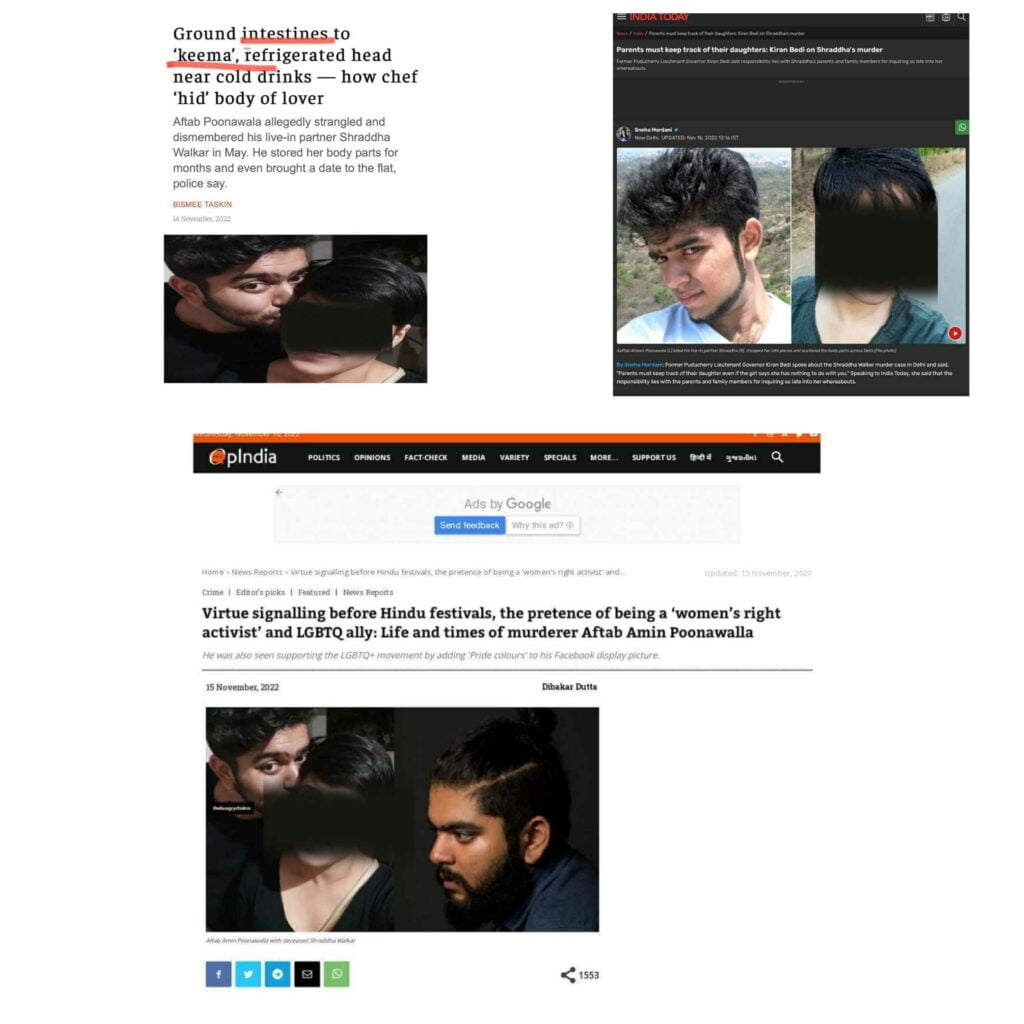
Written by Rohini Menon, the article takes us to the alarming incident of the death of Shraddha Walkar, a 27 year old woman, in the national capital that brought intense and deep conversations in the public domain. The discourse over her death is accelerated with victim blaming and accusations over her interfaith relationship with Aftab Ameen Poonawala, who has been arrested and charged with the murder. The news over her death sparked the Indian mainstream media giving clickbait headlines questioning Shraddha’s life choices.
Rohini tries to remind us that the caste identity of the victim cannot be unseen as it’s quite common in India where women are disowned and cut off from the family once they choose inter faith or inter caste relationships. This has some serious dimensions since women often feel left out from their own house and find it difficult to cope up with the abuses and violence they have to undergo in a relationship. “We opposed this decision because we were Hindu and Koli by caste while the boy is a Muslim and interfaith relationships were not allowed in our religion,” Vikas Walkar said in the FIR.
18. 6 Moments Of Solidarity And Support From The FIFA World Cup 2022

Written by Shriya Roy, the author brings us back to the world cup moments when the world draws curtains on the 2022 edition of the FIFA World Cup in Qatar and mixed emotion lingers at the end of one of the greatest sporting events in the world. The tournament in Qatar started amid a host of controversies regarding Qatar’s human rights violations and accusations of sportswashing. This world cup however proved to be one that will be remembered for ages, not just because of the controversies, but because of the moments of solidarity and support, moments of subtle protests and so much more.
Shreya talks about the key highlights of this year’s FIFA world cup that includes the incredible rise of Morocco, the images of the Moroccan players with their mothers also did was smash the western stereotype of the Arab world, the heartwarming support that the Free Palestine movement received from both players and fans at Qatar 2022, the Iranian football team standing in solidarity with the protesters back home and remained silent during the national anthem, against the discriminatory policy against LGBTQ+ individuals, the German national team posed for their pre-match photo with their hands covering their mouths and finally for those young and old, watching Messi climb to the top gives them hope, and makes them believe that if he can, they can!
19. Shraddha Walkar Murder: A Grave Reflection On Unaddressed Issue Of Intimate Partner Violence
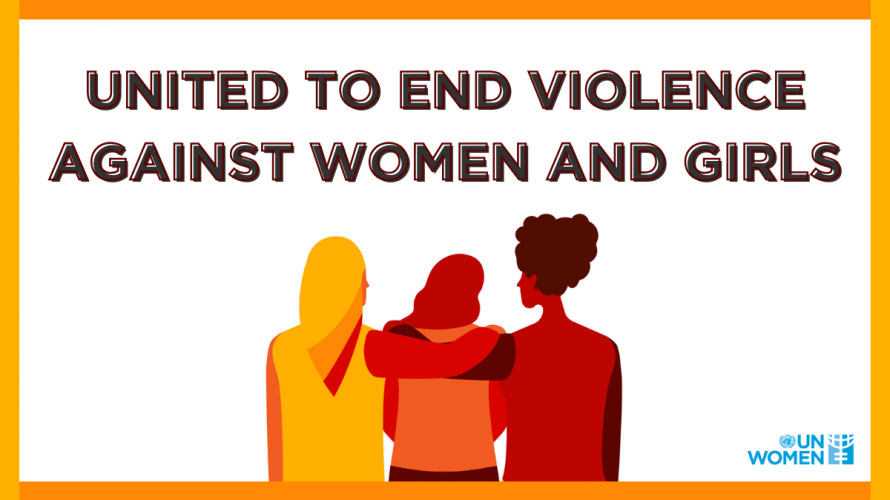
Written by Pragati Parihar, the article talks about the murder of Shraddha which not only points towards a toxic relationship but also highlights the domestic violence or intimate partner violence that exists on a large scale in our country. Shraddha is among the thousands of women in India who are subjected to domestic abuse in their day-to-day lives.
Pragati takes our attention to various reports including a report by National Family Health Survey (NFHS-5), 2019-21, which suggests that women aged between 15-49 who were ever-married have faced intimate partner physical and/or sexual violence at least once in their lifetime. Over 38% of men in India have even admitted to having physically abused their partners, according to a study. Additionally, the latest report by The National Family Health Survey (NFHS) also demonstrates how domestic violence in Indian society is still prevalent. According to the survey, 29.3% of married Indian women between the ages of 18 and 49 reported having experienced either domestic or sexual violence.
Pragati tries to make the readers aware that there’s an urgent need to put a stop to the victim-blaming culture. Violence, be it verbal, physical or sexual, towards anyone, shouldn’t be encouraged in our society. Otherwise, it will only result in the increase of many more cases like Shraddha Walkar.
20. A Guide Towards Inclusion: Supreme Court Releases An LGBTQIA+ Sensitization Module For The Judiciary
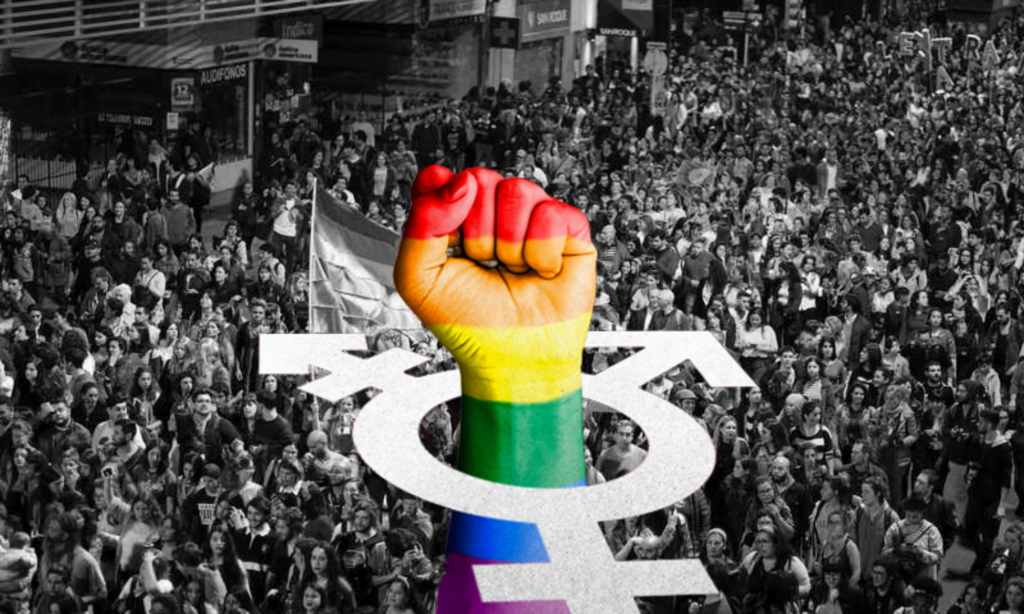
Written by Rajeev Anand Kushwah, the author talks about the sensitization module for the judiciary on LGBTQIA+ Community, released by the Supreme Court of India on Constitution Day 2022, which aims at sensitising the judges, magistrates, and judicial staff about the LGBTQIA+ community in India. One of its major highlights is the acknowledgement that there exists no legal protection or constitutional safeguards that protect members of the queer community from discrimination in India.
Rajeev delves into the module, which also traces the legal history of queer and transgender rights in India, both before and after the Section 377 judgement. Notably, it’s the section on an existing legislative regime that paves the way for the future by focussing on aspects like rights under the constitution, laws that impact the LGBTQIA+ community, and trends in high court cases. The latter layout judgements and cases dealt with the recognition of self-identification of gender identity, conversion therapy and illegal confinement, marriage, consensual queer and live-in relationships, affirmative action and discrimination, healthcare, inheritance, and rights of intersex persons.
21. Gender Budget 2022-23: Have The Challenges Faced By Women Been Adequately Addressed?

Written by By Prathyusha Ramesh, the article as the title suggests, is about the gender budget 2022-23 that has failed to prioritise the key challenges faced by women in terms of social, educational, and financial needs.
Pratyusha explains that gender budgeting is used as a tool to reform gender inequality and to secure socio-economic development to make sure that the benefits reach women and gender minorities just as much as men. Gender budgets were popularised in the 20th century and have been used ever since to address gender inequalities. Gender inequality poses a risk to the country’s balanced development and with the idea to bridge this gap, India started issuing gender budgets from the year 2005.
The author tries to make us aware that women are also exposed to risks related to their physical health. The lack of access to primary healthcare, poor hygiene, lack of awareness about menstrual health, and the like, are some of the major contributors to high rates of female mortality. Women are assigned the roles of caretakers in various areas of life, and due to this, they are actively on the frontline of all families, responding to and taking care of sick family members.
22. Dr. B R Ambedkar: A True Intersectional Feminist Thinker
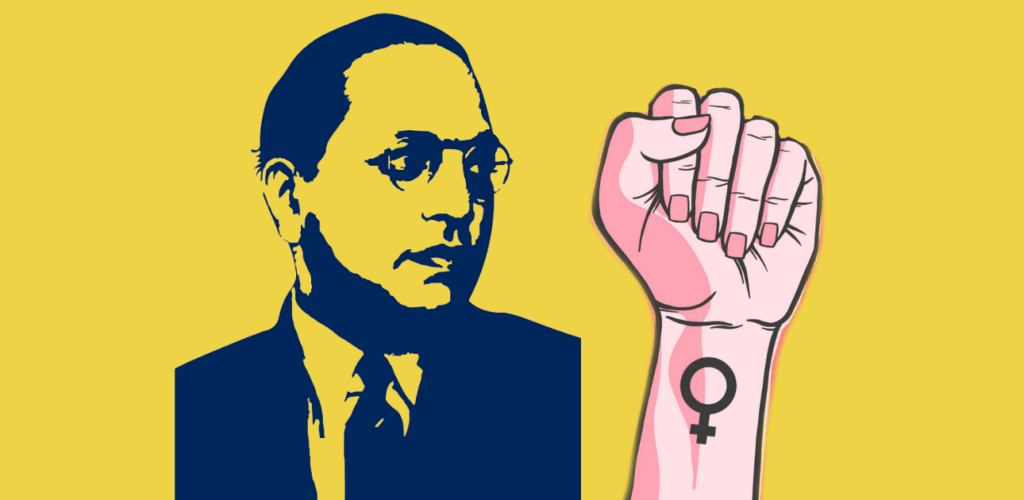
Written by Simantini Sarkar, the article focuses on Baba Saheb Ambedkar’s works and political reforms that have been largely categorised as Dalit reforms alone, and his identity as a feminist activist and thinker has been ignored. This systematic marginalisation of his works is a direct consequence of the working of Savarna feminism. It is time we acknowledge his contribution in shaping feminism in India. His approach towards feminism was not only theoretical but pragmatic as well.
Simantini delves into the history of India, between the years 1942 and 1946, where Ambedkar formulated various pro-women laws, including equal pay for equal labour, casual and privileged leave, injury compensation, and pension. As a member of the Bombay Legislative Council in 1928, Ambedkar voted in favour of a measure guaranteeing paid maternity leave to factory workers. According to him, it was the duty of the employer to ensure the women’s financial safety during their maternity leave as they profited from their labour.
Also read: 19 Stories On FII That You Loved The Most In 2019
With this act, Simantini writes, Ambedkar demonstrated both class and gender consciousness by focusing on the economic and productive aspects of motherhood among working-class women.
To sustain our efforts in the long-term and to keep bringing you the best of intersectional, feminist content, in January 2021, we launched the FII Membership Programme. The paid membership programme that offers premium content and benefits to our supporters. We are grateful to now have 160+ members whose contributions help sustain our work and ensure we thrive in these uncertain times.
If you too would like to support FII’s work, consider becoming an FII Member here.
About the author(s)
Feminism In India is an award-winning digital intersectional feminist media organisation to learn, educate and develop a feminist sensibility and unravel the F-word among the youth in India.
